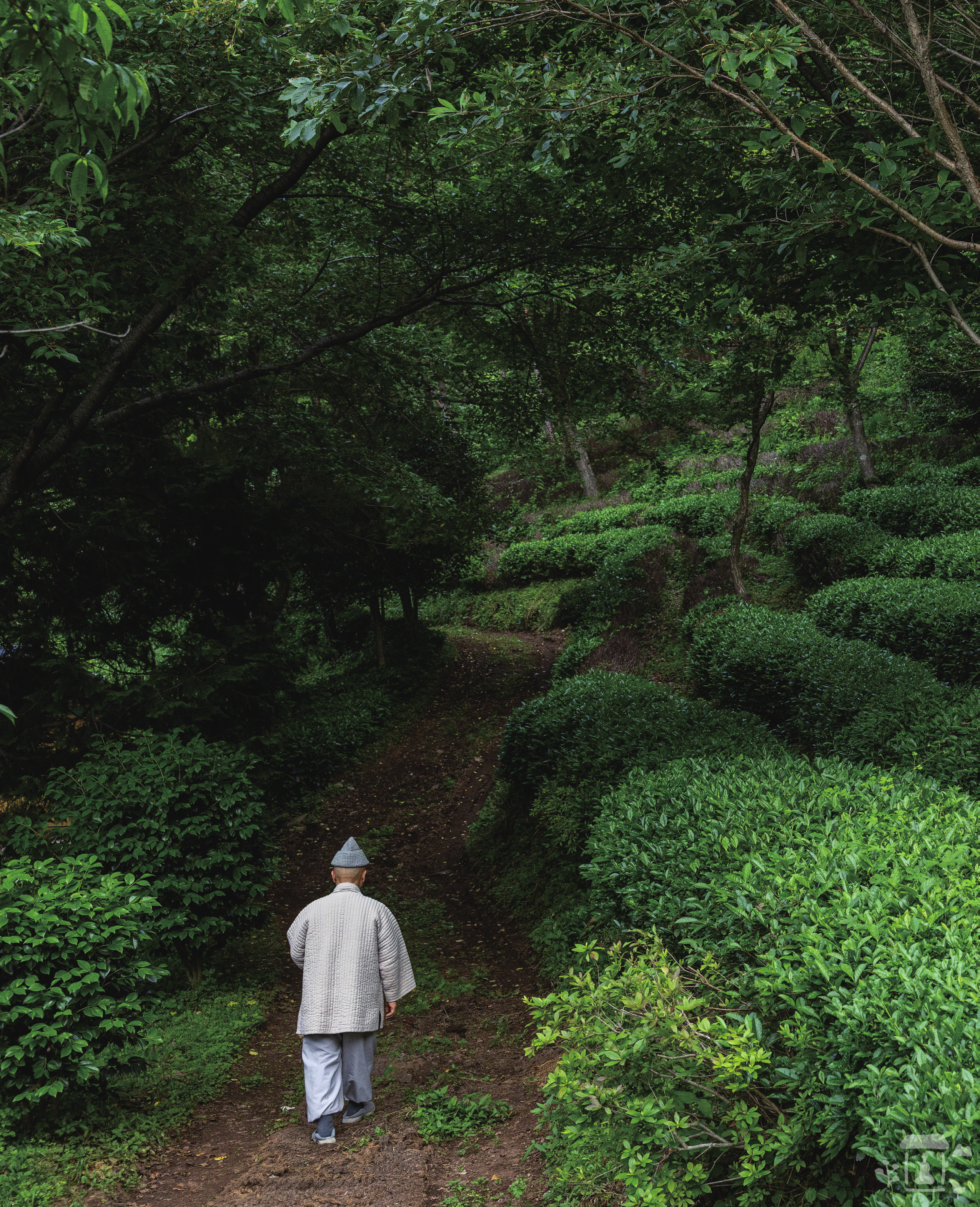
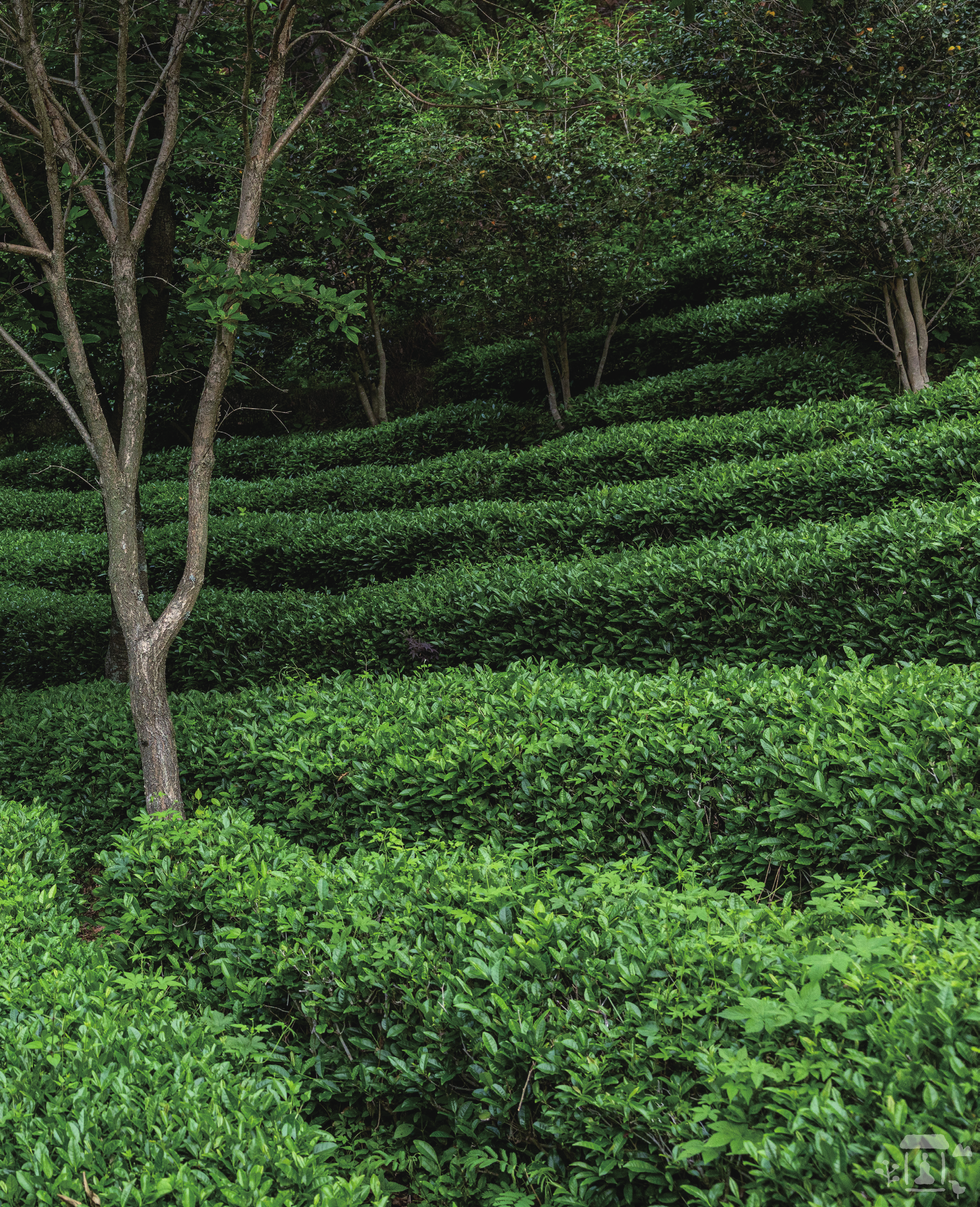
Since I often visit temples,
I think of all temples as places where buddhas and monastics reside.
Thus, I honestly feel more carefree than cautious when visiting them.
Although the location of each temple is different,
I rarely get excited by the commercial districts near them or by a temple’s layout.
However, the path to Cheonggyesa Temple in Hadong is different.
There is no nearby commercial district,
only a mountain village located about 10 kilometers up a winding mountain road.
There are neither convenience stores common in the city,
nor restaurants to satisfy one’s hunger,
nor rest facilities like summer resorts have.
There is just a realm of green tree
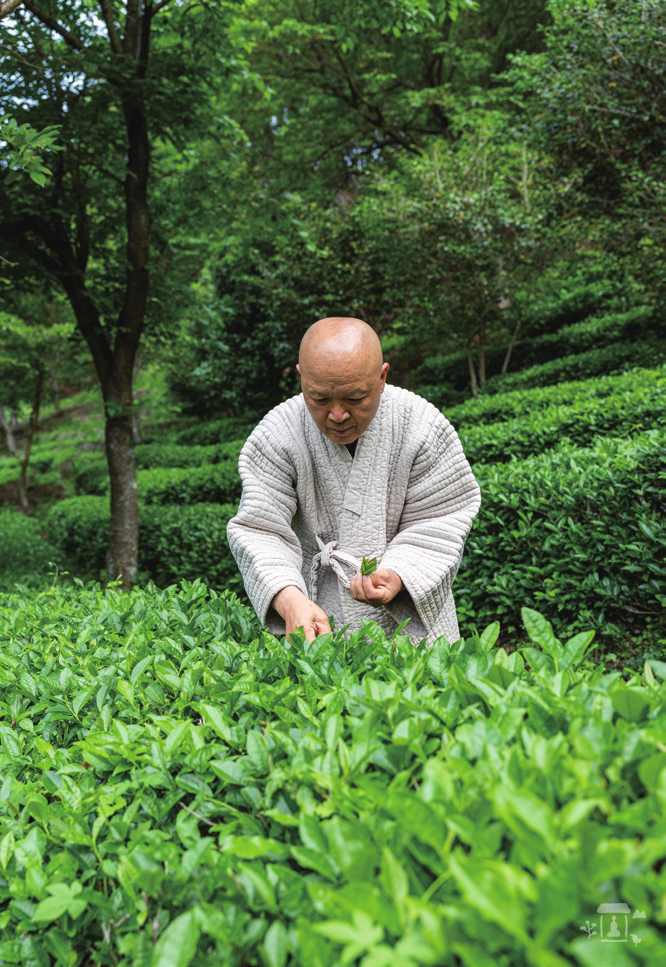
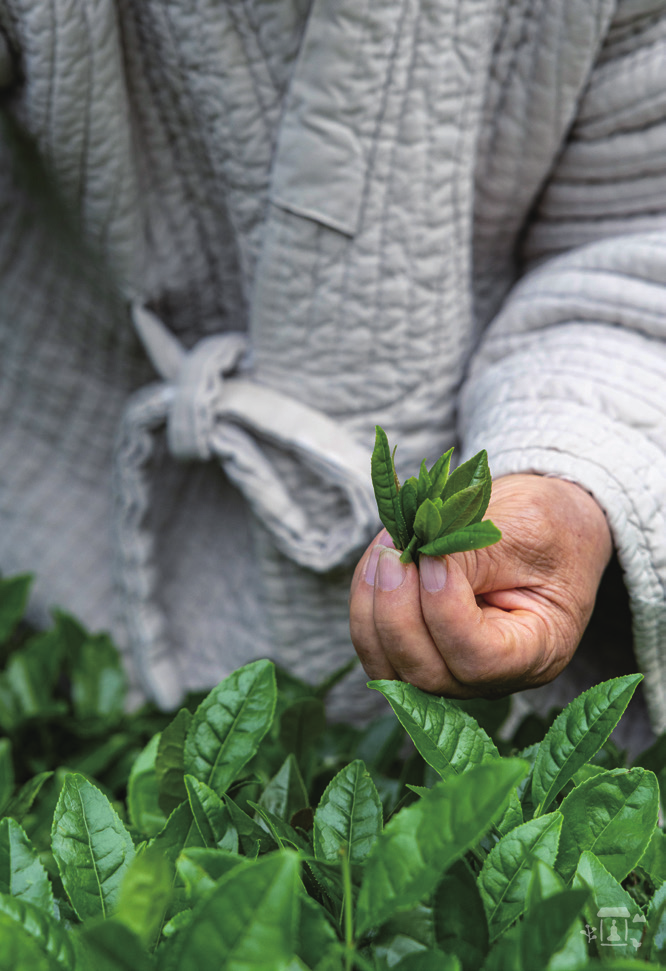
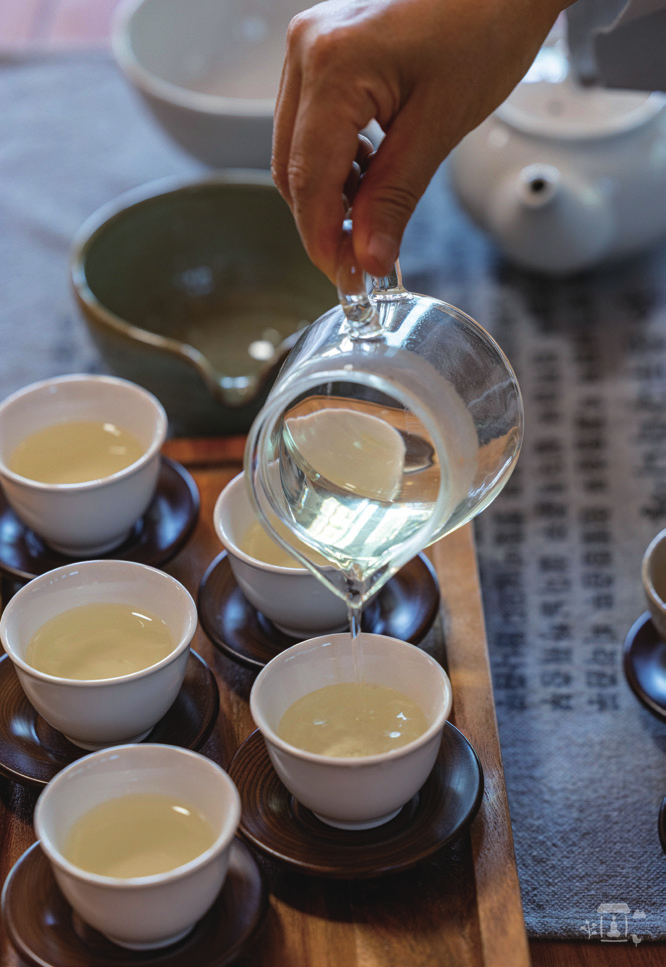
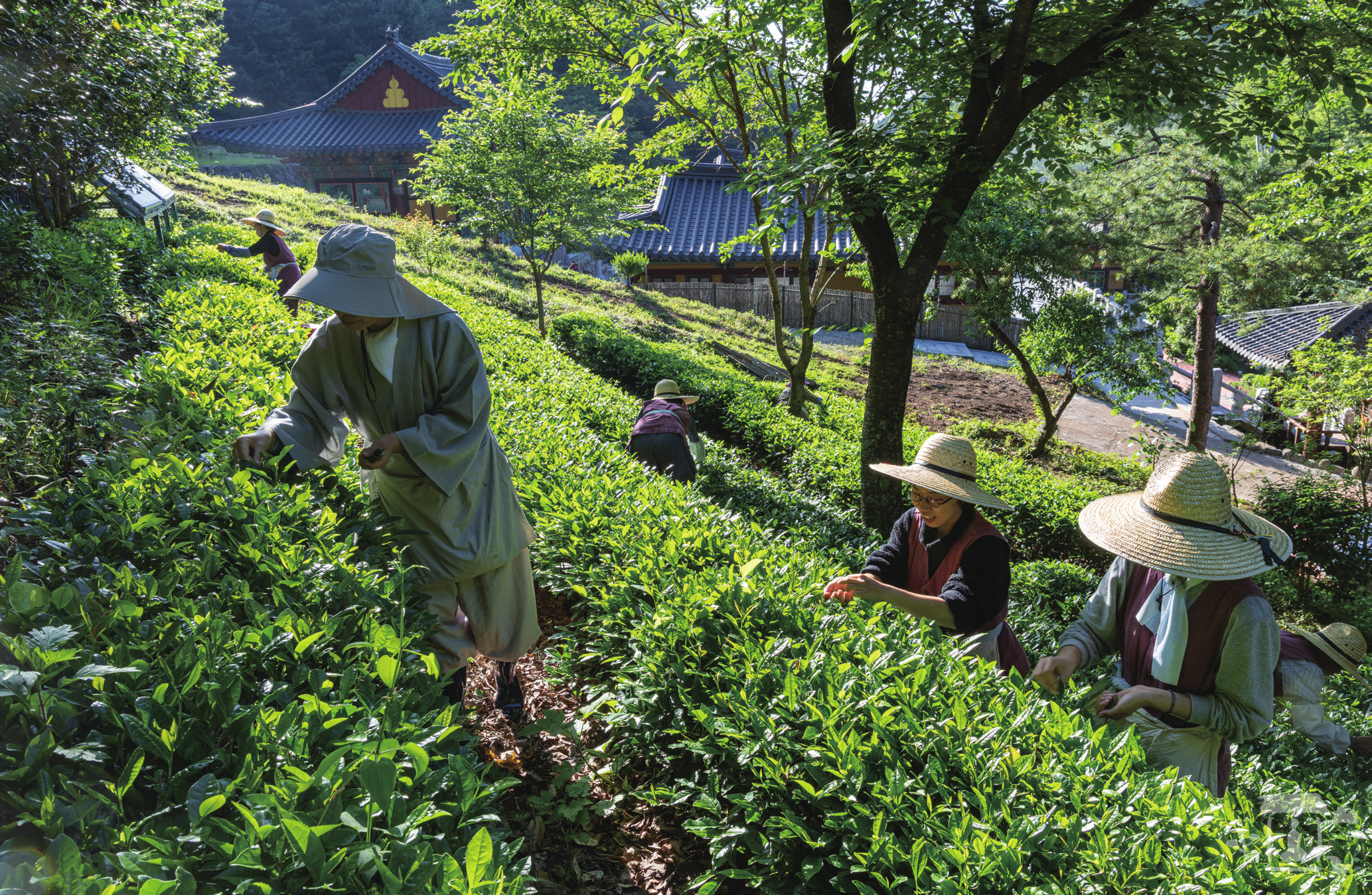
The same is true of the mountain path that extends from the edge of the mountain village up to the temple compound. It feels like a path to the realm of the supramundane. When I finally arrive at Cheonggyesa Temple, I see it is a truly secluded temple in the forest. But it feels more like I am on an island than on a mountain. One layman is silently chopping firewood, and in the kitchen are people with relaxed faces who are not wary of outsiders. Each are busy with their own tasks.
It is still spring. I heard that the volunteers had gone out to pick tea leaves early in the morning. After crossing a stream and climbing a short mountain path, I found a group of people sitting around in a pavilion and having saecham (a light, in-between meal). They greeted me. Tea leaves that look to be about a finger joint long are piled up in a basket. They are plump and shiny. They will be dried and rolled and made into green tea by evening.
I walk through a dense bamboo forest where bamboo shoots taller than I grow scattered here and there. I want to feel the forest with all my senses, but I am soon overcome by the desire to preserve and save it in pictures. I have no choice but to take out my cell phone camera. On the way down the path, I inevitably pass fields of green tea. The broad-leaf trees standing like telephone poles in the middle of the tea fields remind me of those in Darjeeling, India. Straw hats poke out from above the tea trees, now nearly waist-high. The diligent workers are picking tea again after finishing their morning saecham.
About 30 years ago, there were neither tea trees, nor camellia trees, nor Daeungjeon Hall here. This is all the creation of Jisan Seunim, the abbot of Cheonggyesa Temple
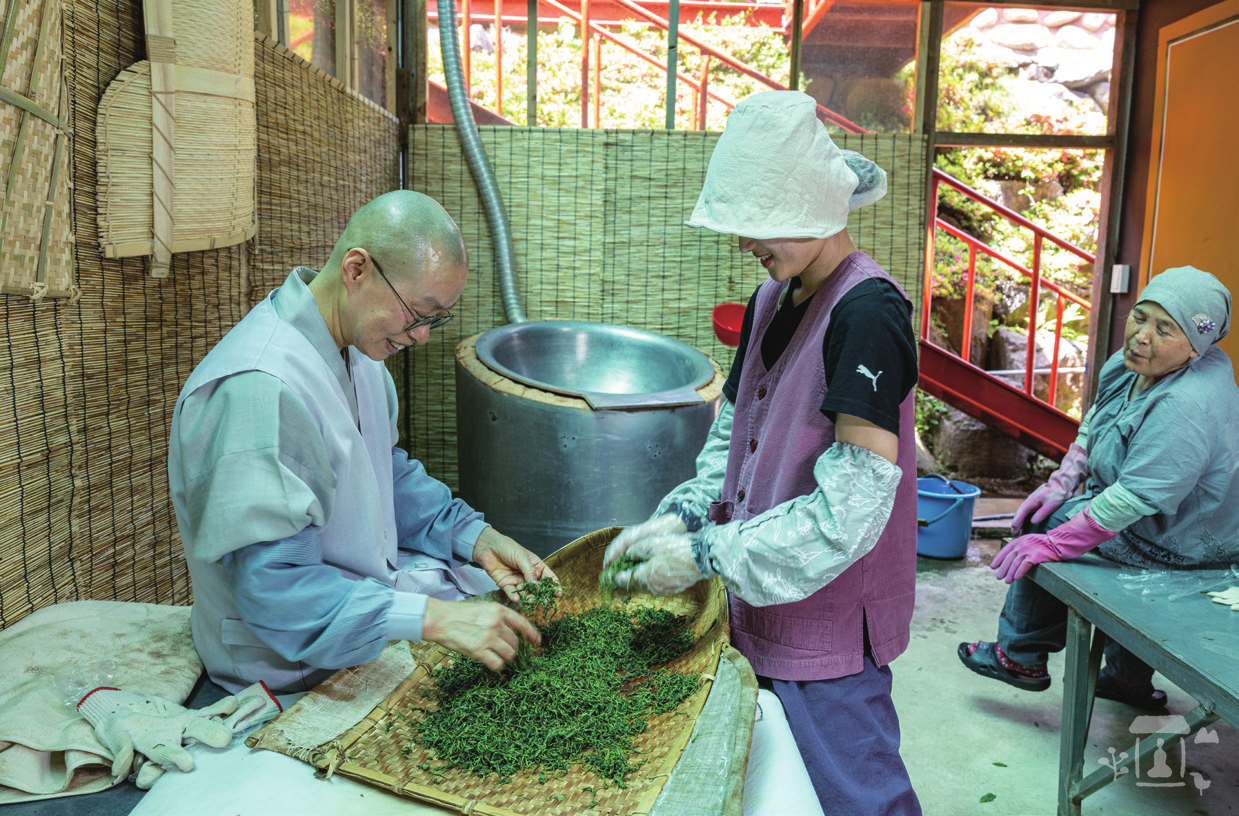

Jisan Seunim neither disagrees nor agrees with my greeting. He just smiles. To my sincere questions about how he ended up here, he answers:
“About 30 years ago, I was in my mid-50s and working at the Seongju City Temple in Gyeongbuk Province. Before that, I reached my mid40s when I was at another temple. That’s when the president of the devotees’ association gave me some profound advice: ‘Regardless of whether one is ordained or not, one must find their true foundation.’” “I had been thinking of going deep into the mountains when I turned 60, and the Dharma name my teacher gave me was Jisan (“Wise Mountain”). I had some vague thought of living on Mt. Jirisan. I found this plot of land through the recommendations of many people, and I liked the valley and the water. And that’s how I came to live here.” The buildings in the current temple compound were built one by one by Jisan Seunim. He also planted the tea trees on the mountain where there previously were none. And that coincided with the beginning of his work to establish a temple here. “When Daeungjeon Hall was built 30 years ago, I planted a grove of camellia trees and tea trees. Tea represents clarity, and clarity means purity. And I believe tea is a doorway to the realm of Seon.”




Cheonggyesa Temple was designated to be a Templestay temple ast year. Its tea fields—cultivated in the past with Seon in mind—now attract people in search of Seon. Its Templestay program is titled “Tea Brewed with the Pure Water of Cheonggye.” Since tea is a key component in meditation and sitting Seon, Jisan Seunim thought it was also important to teach visitors how to pick tea leaves, make tea, and drink it with the proper mindset.
“You can experience the tea-making Templestay program all year except in the middle of winter. In the spring, you can make and drink roasted tea, and later, when the tea leaves become thick and lush, you can make fermented tea. Roasted tea is used in tea ceremonies to cultivate inner spirituality or for paying respect to the buddhas.” Templestay participants pick tea leaves in the morning and make tea in the afternoon by roasting the leaves nine times. If they cannot finish the tea that day due to the large quantity they have picked, they can taste the tea others have made. If they can spend the full two nights and three days here, they can drink and evaluate the tea they have made themselves.
Tea is roasted nine times in a process called “gujeung-gupo.” This is called “beopje tea (Dharma-processed tea).” Generally, the process of making tea is called “jeda,” but when making tea at a temple, the concept of “beop (Dharma)” is added.
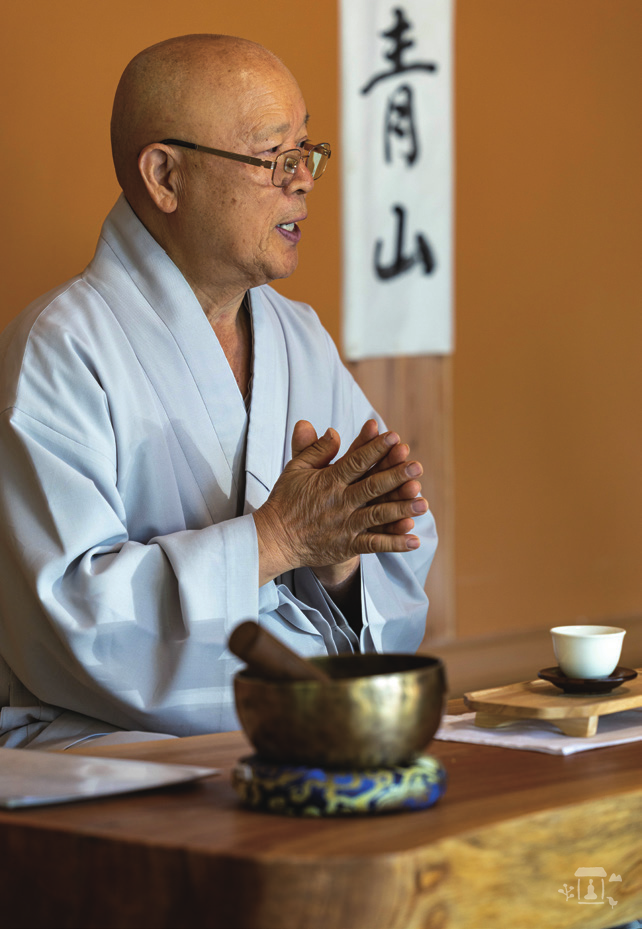
“Beopje” means that it was made precisely according to the original, established protocol. Green tea is made through the processes of withering (wijo), roasting (salcheong), rolling (yunyeom), and fragrance-enhancing (gahyang). In the roasting process, one learns what it means to endure by exposing one’s own body to extreme heat, and in the rolling process, one learns about creating harmony with others by testing one’s own body. In the fragrance-enhancing process, one enhances the fragrance so that it lasts for more than a year. The whole process embodies both elegance and taste.”
When Jisan Seunim—who is over 80 years old—was a young postulant of 15, he made tea for the then abbot. Although Jisan had never tasted tea in his life, the abbot praised him, saying, “Today’s tea is especially delicious.” Jisan Seunim has made tea a part of his practice all his life, and he once invited a famous monk from Seonamsa Temple to learn the “beopje” process of making tea. However, Jisan Seunim says the tea he makes now is only 90% as good as the tea he made during his postulancy. Just as there is no perfection in the Dharma, the same seems to be true for beopje.

What Jisan Seunim wants to convey through tea is ultimately the spiritual state of Seon. When I begin to wonder if perhaps the concept of Seon is too abstract for modern people, Jisan Seunim says that
tea prepared properly has five tastes: astringent, fresh, bitter, sour, and sweet. If you clearly know the five tastes, you can enjoy a clear mind without being seduced by the five desires. What are the five desires? They are the desires that torment humans: the desire for money, the desire for sex, the desire for food, the desire for sleep, and the desire for fame.
“In modern times, tea is clearly an item of personal preference. Another item of personal preference is alcohol. When considering whether to drink tea or alcohol, the final result alcohol gives us is intoxication, and the final result tea gives us is wakefulness. Tea helps us live a wakeful life. If you ask whether a wakeful life is the right life, or whether being drunk and confused is the right life, the answer is clear, right? The path that the tea ceremony leads us to is the restoration of a wakeful life, even in difficult, painful, or confusing situations. Tea purifies the functions of the body, returns the mind to clarity, and helps us wake up from a life of confusion and chaos. That is what tea does, and that is the goal of Cheonggyesa’s Templestay.” Those who visit the supramundane realm of Cheonggyesa Temple may not understand Seon right away, but they can properly understand tea and the aesthetics of drinking it.
“The Analects of Confucius mentions three friends who are helpful to humans. Tea also has three helpful friends: the valley, the flowers, and the tea trees. When savoring the five tastes of tea, you realize that water flows as water and flowers bloom as flowers. At Cheonggyesa Temple, where the valley water always flows making beautiful sounds, I hope you can experience the realm of tea where water flows and flowers bloom when tea is used in a marvelous way.’”





